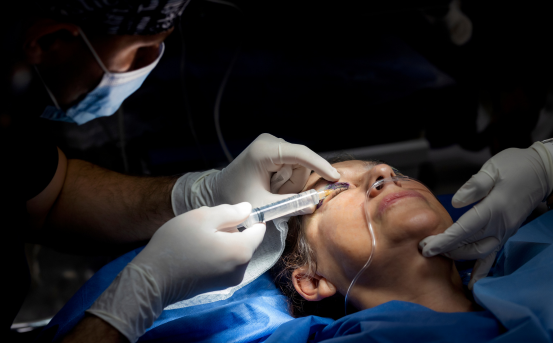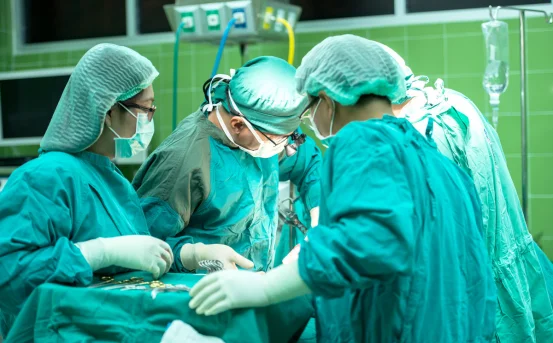Eyelid surgery, medically known as blepharoplasty, is a popular cosmetic and functional procedure aimed at rejuvenating the appearance of the eyes by removing excess skin, fat, or muscle from the upper or lower eyelids. Often considered both a cosmetic and reconstructive procedure, eyelid surgery is increasingly sought after by individuals looking to refresh their facial appearance or improve their vision obstructed by drooping eyelids. This is where eyelid surgery can make a significant difference. Whether you’re seeking to enhance your facial aesthetics or address medical issues like obstructed vision, eyelid surgery is a proven solution that delivers lasting results. From lifting droopy upper eyelids to smoothing out under-eye bags, this transformative procedure offers both cosmetic and functional benefits.
This procedure has gained tremendous popularity worldwide not just among those wanting to look younger but also among individuals seeking relief from discomfort and vision-related problems caused by excess eyelid tissue. It is a minimally invasive procedure with a relatively quick recovery time, making it an attractive option for many.
What is Eyelid Surgery?
This surgical procedure corrects defects, deformities, or disfigurations of the eyelids. It may also be done to aesthetically enhance the appearance of the eye area by tightening the skin and removing saggy tissues.
The surgery is commonly performed on the upper eyelids, lower eyelids, or both, depending on the patient’s needs. This procedure can :-
-
Remove excess skin that impairs vision
-
Eliminate under-eye bags
-
Tighten drooping lower eyelids
-
Restore a youthful and refreshed appearance
While it is often considered a cosmetic procedure, it can also be a medical necessity for individuals whose sagging eyelids hinder their eyesight.
Who is a Good Candidate for This Procedure?
You may be a suitable candidate for this procedure if you :-
-
Have droopy upper eyelids that impair your vision
-
Suffer from puffiness or bags under the eyes
-
Have excess skin on the lower eyelids
-
Are in good general health and do not smoke
-
Have realistic expectations from the surgery
It is essential for candidates to understand that while eyelid surgery can enhance appearance and vision, it will not eliminate dark circles, crow’s feet, or other facial wrinkles.
Types of Eyelid Surgery
There are three main types of blepharoplasty:
- Upper Eyelid Surgery :- This targets sagging or droopy upper eyelids. Surgeons remove or reposition excess skin, muscle, and fat to create a more alert and youthful look. It also helps improve peripheral vision in cases where sagging skin interferes with sight.
- Lower Eyelid Surgery :- This is performed to address under-eye bags, wrinkles, or sagging skin. Fat deposits may be removed or redistributed to achieve a smoother appearance beneath the eyes.
- Double Eyelid Surgery :- Commonly performed in East Asian countries, this surgery creates a crease in the upper eyelid to form a double eyelid, which some individuals desire for cosmetic reasons.
How is This Procedure Performed?
Eyelid surgery is typically done under local anesthesia with sedation or general anesthesia, depending on the complexity and patient preference.
Here’s a general overview of the procedure :-
-
Marking the eyelids :- The surgeon marks the natural creases and areas where incisions will be made.
-
Making the incisions :- For upper eyelids, incisions are usually made along the natural crease. For lower eyelids, incisions can be made just below the lash line or inside the eyelid (transconjunctival method).
-
Removing excess tissue :- Fat, skin, or muscle is removed or repositioned to achieve the desired effect.
-
Closing the incisions :- Sutures or surgical glue is used to close the cuts, and the stitches are usually removed within 5–7 days.
The entire procedure usually takes 1 to 2 hours, depending on whether both upper and lower eyelids are being treated.
What are the Benefits of This Procedure?
Eyelid surgery offers both cosmetic and functional benefits:
Cosmetic Benefits :-
-
Rejuvenated and youthful eye appearance
-
Reduction in puffiness and under-eye bags
-
Elimination of excess eyelid skin
-
Enhanced facial symmetry
Functional Benefits :-
-
Improved field of vision
-
Reduced eye strain and fatigue caused by sagging eyelids
-
Better eyelid function and protection of the eyes
Risks and Complications of Eyelid Surgery
Like any surgical procedure, eyelid surgery comes with potential risks. While complications are rare when performed by an experienced surgeon, it’s important to be aware of the possibilities :-
-
Bleeding or bruising
-
Infection
-
Dry eyes
-
Difficulty closing the eyes
-
Scarring
-
Asymmetry
-
Temporary blurred or double vision
Most side effects are temporary and resolve during the healing process. Choosing a board-certified plastic surgeon or oculoplastic surgeon significantly minimizes risks.
Recovery After This Procedure
The recovery period after eyelid surgery is relatively short compared to other surgical procedures. Here’s what you can expect :-
Immediate Post-Surgery :-
-
Mild pain, swelling, and bruising
-
Blurry vision from ointment or swelling
-
Sensitivity to light and wind
Recovery Timeline :-
-
1–2 Days :- Use cold compresses to reduce swelling.
-
5–7 Days :- Stitches are removed; most bruising begins to fade.
-
10–14 Days :- You can resume light social and work activities.
-
3–4 Weeks :- Full recovery and final results are visible.
Most patients can return to their daily routines in about 7 to 10 days, although strenuous activities should be avoided for a few weeks.
Pre- and Post-Surgery Care Tips
Before Surgery :-
-
Stop smoking at least two weeks prior
-
Avoid blood thinners or anti-inflammatory medications
-
Arrange for someone to drive you home and assist after surgery
After Surgery :-
-
Keep your head elevated while sleeping
-
Use prescribed eye drops or ointments
-
Wear sunglasses outdoors
-
Avoid makeup and contact lenses for at least 2 weeks
Following your surgeon’s post-op instructions carefully ensures a smoother and quicker recovery.
This Procedure vs. Non-Surgical Alternatives
While eyelid surgery offers permanent results, some non-surgical options exist for those hesitant about surgery:
-
Botox :- Reduces the appearance of wrinkles around the eyes.
-
Dermal fillers :- Can temporarily reduce under-eye hollows or bags.
-
Laser treatments :- Tighten the skin and improve texture.
However, these options do not remove excess skin or fat and are temporary. For long-term, dramatic results, blepharoplasty remains the gold standard.
Conclusion
Eyelid surgery, or blepharoplasty, is a transformative procedure that improves both the appearance and function of the eyes. Whether you are looking to restore a youthful look, correct droopy eyelids affecting your vision, or enhance facial harmony, eyelid surgery offers a safe and effective solution.























